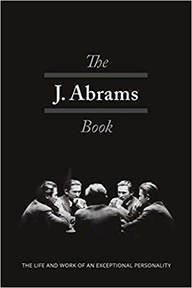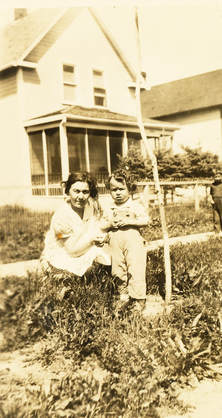 The Jewish Review of Books published an intriguing piece in its latest edition, featuring two books about anarchists, both of them Jews who had recently immigrated to the US from Tsarist Russia. The anarchist movement has been largely forgotten amid the later polarisation of the world between Communism and Capitalism. But in the US alone, in the early 20th century there were several hundred thousand anarchists, and they outnumbered Marxists in the country. They stood for the creation of a peaceful, stateless anti-authoritarian society, in which people would freely join together to govern themselves. Anarchists played a significant role in both the Russian Revolution of 1917 and the Spanish Revolution of 1936. Jewish immigrants from working-class families were prominent in the anarchist movement in the US, pursuing arguments in New York’s lively radical Yiddish-language subculture. They were not ashamed of their Jewish heritage, but rejected Judaism and held an annual Yom Kippur Ball, mocking the holiest day in the Jewish calendar. Jacob Abrams was born in present-day Ukraine in 1886, coming to America in 1908. He gained fame and notoriety in the US after he organised a protest in August 1918 in reaction to Washington’s decision to send 15,000 troops to intervene in revolutionary Russia. They distributed leaflets in English and Yiddish around New York’s immigrant district, the Lower East Side, calling for workers to participate in a general strike. “An open challenge only will let the government know that not only the Russian Worker fights for freedom, but also here in America lives the spirit of Revolution.” Abrams and his co-conspirators were swiftly arrested and tried under the espionage act, receiving sentences of up to 20 years. Their appeal went to the US Supreme Court and became famous as a trial for free speech, and a compromise was reached offering the prisoners’ release provided they leave for Russia – their birthplace – at their own expense and never return to the US. In November 1921 they set sail for the Soviet Union. Abrams spent five years in the USSR, and quickly gained the impression that it was not the workers’ utopia that he had dreamed of. He and his wife were assigned a space in a communal apartment, a single room shared with three other people. He found people hungry and dressed in rags. He gained permission to set up Russia’s first automatic laundry, which operated out of the basement of the foreign ministry. But his protestations about inefficiencies and graft were ignored and eventually led to charges of anti-Soviet activity being brought against him. He quit his job and was immediately evicted from his home as his accommodation was tied to government service. He eventually managed to convince the authorities that he would be of more value to the revolution if he continued his work abroad and, surprisingly, he and his wife were given passports. They left for Mexico, where Abrams became director of the Jewish Cultural Centre and published Yiddish books and newspapers, and later became a close friend of the exiled Leon Trotsky. Sam Dolgoff was born in Vitebsk, in present-day Belarus, in 1902. His father Max had been a rebel back in Russia, where he enraged his own father, a rabbi, by renouncing religion. He left for America to avoid being conscripted into the army, and was joined by his wife and son in 1905. Sam was a socialist by the age of 14, but he soon concluded that the socialists were mere reformers who were not really interested in uprooting the capitalist system or transforming society. When he started expressing these views at meetings and publishing his ideas he was expelled from the socialist party for insubordination. He joined the Industrial Workers of the World in 1922, becoming a migratory worker and activist. He is described as having “a strong face, a rugged Russian Jewish face, wild black hair swept back, acute black eyes behind the glasses, a prominent nose,” and apparently looked like he combed his hair with an eggbeater. Later, in New York City, he joined with a group of Italian anarchists to found the Vanguard Group, an anarcho-communist group that largely propagated the ideas of the 19th century Russian revolutionary anarchists Mikhail Bakunin and Peter Kropotkin, and in 1954 he helped form the Libertarian League, which held weekly forums featuring non-anarchist speakers. In the 1960s, Dolgoff despaired of the new wave of anarchists, whom he described as “half-assed artists and poets who reject organisation and want only to play with their belly buttons”. He scorned the young radicals’ embrace of the new Cuban leader Fidel Castro, decrying him as a Stalinist dictator, and campaigned on behalf of the Cuban anarchists that Castro had attacked and exiled. As the review concludes, both these men accomplished little, they failed to achieve the goal of an anarchist society and to attract enough believers to their cause to keep the movement alive. But “they were dreamers… their dream was a noble one and worthy of being remembered”. For the full review, click here https://jewishreviewofbooks.com/articles/3222/free-radicals/ The J. Abrams Book: The Life and Work of an Exceptional Personality by Jacob Abrams, trans Ruth Murphy Left of the Left: My Memories of Sam Dolgoff by Anatole Dolgoff
1 Comment
 It was a real thrill for me to visit Canada last month, to catch up with relatives, some of whom I had not seen for many years, and to get to know dozens more that I had never met before. It was my first visit to Winnipeg, where my family immigrated to when they left Russia and the town where father was born and brought up. Of particular interest was a trip to Winnipeg’s North End, where so many of the Jewish community settled. The area centres around Selkirk Avenue. The Manitoba Historical Society has some great descriptions of Selkirk Avenue in the early 20th century. The street is named after Lord Selkirk, who was the first to encourage European settlers to the area and helped establish the city of Winnipeg. A four-block miniature park nearby was also named after him. The street was the heart of the Jewish North End. There were Jewish bakers, kosher butchers and two grocery stores owned by Goldenberg and Rosen. A confectioners called the Five Cent Store was owned by a Mr Saidman, who sold no item over five cents, mostly candy, ice cream, pop, popcorn and sunflower seeds, which made him famous. And a fur and cap store stood on the corner of Selkirk and Charles Street. The Hebrew School was around the corner, and next door to it lived the chief Rabbi. The Queen’s Theatre was on Selkirk and played to capacity with Jewish talent. The Pritchard pool, police station, chicken and egg dealers, barber shops, a church, synagogues, horse barns, watch makers, a tent and awning store and sign painter were all located within a block or so. In fact, the North End of Winnipeg around Selkirk Avenue was just like the shtetl that the Jews had left behind in Eastern Europe, a shtetl that they recreated for themselves half way around the world. And here in Winnipeg, even the climate was familiar, with long, fierce winters and brief, hot summers. Little is left of the Jewish North End today. A lone Jewish baker’s shop sits on Selkirk Avenue, selling all variety of knishes, over a dozen different types of bagels, blintzes and the most enormous cinnamon buns. Now the area reflects subsequent waves of immigration from other parts of the world, while the Jews have largely resettled in fancier parts of town or moved away to other cities across Canada and the US. In the main public library, Henderson’s Winnipeg Directory is an amazing resource that was published annually from 1882 listing all the city’s inhabitants by name, along with their address and place of work. Searching the directory for 1926, I found my grandmother listed, living on Euclid Avenue and working at Globe Bedding, and my grandfather at 303 Flora Avenue, the house where my father would later grow up. That section of Flora Avenue has since been destroyed, but I am guessing that this photo of my grandmother with my father as a little boy, taken around 1935, may show the house in the background. After one of my talks in Toronto, an audience member asked me, why did your family choose Winnipeg? My response, that I didn’t think anybody actually chose Winnipeg, drew laughter among the cosmopolitan audience. But another attendee pointed out that trains bringing settlers from the boats docking in Halifax, Nova Scotia, made no stops until they reached Winnipeg. Canada was inviting immigrants to settle the prairie regions in the late 19th and early 20th centuries, giving away or cheaply selling off fertile farming land. Winnipeg, the meeting point of the Assiniboine and Red Rivers, was the gateway to this new frontier land. Some Jews joined farming cooperatives and settled the prairie land. But Jews had been deprived of the right to own land back in the Russian Empire and most felt that farming was not for them. Instead they settled in Winnipeg in great numbers, as did Ukrainians, Mennonites, Germans and Scandinavians, although some of these groups assimilated more quickly than others. |
Keeping stories aliveThis blog aims to discuss historical events relating to the Jewish communities of Ukraine, and of Eastern Europe more widely. As a storyteller, I hope to keep alive stories of the past and remember those who told or experienced them. Like so many others, I am deeply troubled by the war in Ukraine and for the foreseeable future, most articles published here will focus on the war, with an emphasis on parallels with other tumultuous periods in Ukraine's tragic history. Archives
March 2024
Categories
All
|
 RSS Feed
RSS Feed
